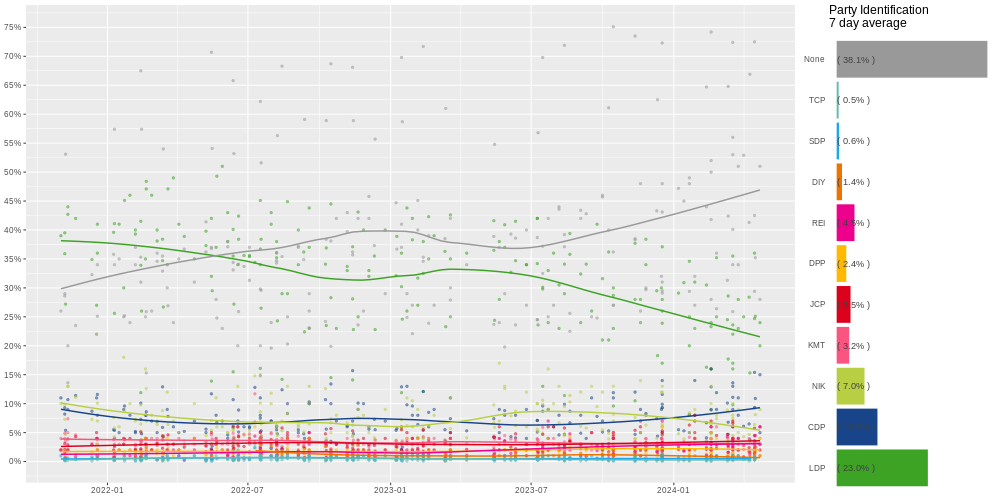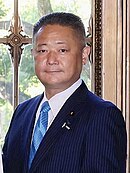2024 Japanese general election
This article needs additional citations for verification. (December 2021) |
| |||||||||||||||||||||||||||||||||||||||||||||||||||||||||||||||||||||||||||||||||||||||||||||
All 465 seats in the House of Representatives 233 seats needed for a majority | |||||||||||||||||||||||||||||||||||||||||||||||||||||||||||||||||||||||||||||||||||||||||||||
|---|---|---|---|---|---|---|---|---|---|---|---|---|---|---|---|---|---|---|---|---|---|---|---|---|---|---|---|---|---|---|---|---|---|---|---|---|---|---|---|---|---|---|---|---|---|---|---|---|---|---|---|---|---|---|---|---|---|---|---|---|---|---|---|---|---|---|---|---|---|---|---|---|---|---|---|---|---|---|---|---|---|---|---|---|---|---|---|---|---|---|---|---|---|
| Opinion polls | |||||||||||||||||||||||||||||||||||||||||||||||||||||||||||||||||||||||||||||||||||||||||||||
| |||||||||||||||||||||||||||||||||||||||||||||||||||||||||||||||||||||||||||||||||||||||||||||
 House of Representatives districts after 2022 redistricting | |||||||||||||||||||||||||||||||||||||||||||||||||||||||||||||||||||||||||||||||||||||||||||||
| |||||||||||||||||||||||||||||||||||||||||||||||||||||||||||||||||||||||||||||||||||||||||||||
Early general elections are scheduled to be held in Japan on 27 October 2024,[1] due to the incoming finalization of a request of early dissolution of the House of Representatives by prime minister Shigeru Ishiba. Voting will take place in all Representatives constituencies including proportional blocks, to appoint Members of Diet to seats in the House of Representatives, the lower house of the National Diet of Japan. As the cabinet has to resign after a general House of Representatives election in the first post-election Diet session (Constitution, Article 70), the lower house election will also lead to a new election of the Prime Minister in the Diet, and the appointment of a new cabinet (even if the same ministers are re-appointed).
Background
[edit]On 30 September 2024, Shigeru Ishiba, who became the President of the Liberal Democratic Party on 27 September, officially announced that he would call an early election to be held on 27 October, a year ahead of the expiration of the current term, to seek confidence from the people. After his inauguration on 1 October, the House of Representatives is scheduled to be dissolved on 9 October, with the election being announced on the 15th, and voting to take place on the 27th.
The election is held after the replacement of major party leaders. The Liberal Democratic Party (LDP) elected former Minister of Defense Shigeru Ishiba on 27 September to replace outgoing Prime Minister Fumio Kishida, the Constitutional Democratic Party (CDP) elected former Prime Minister Yoshihiko Noda as their leader on 23 September, Nobuyuki Baba took leadership of Nippon Ishin no Kai on 30 November 2021, Keiichi Ishii was elected leader of Komeito on 28 September, and Tomoko Tamura became leader of the Japanese Communist Party on 18 January 2024. It is the first time since 2012 where all three of the leading parties in the Diet have had new leadership entering the next election.
The regular election to the House of Councillors, the other house of the national legislature which cannot be dissolved and is thus on fixed terms, will take place in 2025; but, also on 27 October, a by-election to the House of Councillors will be held in Iwate. On the prefectural level, the gubernatorial elections in Toyama and Okayama have already been set for 27 October.
Pre-election development
[edit]On 3 October, Seiji Maehara, leader of the Free Education For All which commanded four seats in the Diet, announced that his party would join the Nippon Ishin no Kai after months of talks for merger and would run as Ishin-endorsed candidates in the upcoming election. However, House of Representatives member Atsushi Suzuki, who would run in the Kanagawa 18th district, did not join the coalition due to its competition with a Ishin candidate in the same constituency, on the same day announced that he would run as an official candidate for the Sanseitō.[2]
After holding talks with Nippon Ishin no Kai leader Nobuyuki Baba and Democratic Party for the People (DPTP) leader Yuichiro Tamaki on 3 October as an attempt to unifying opposition candidates for constituencies to prevent the LDP and its Komeito ally from securing a majority, CDP leader Yoshihiko Noda on 4 October switched his stance to aiming to form a government on its own by filling more candidates in the proportional representation blocks.[3][4]
Political parties
[edit]| Parties | Leader | Ideology | Seats | Status | ||
|---|---|---|---|---|---|---|
| Last election | Before election | |||||
| Liberal Democratic Party | Shigeru Ishiba | Conservatism Japanese nationalism | 259 / 465 | 258 / 465 | Governing coalition | |
| Constitutional Democratic Party of Japan | Yoshihiko Noda | Liberalism | 96 / 465 [a] | 99 / 465 | Opposition | |
| Nippon Ishin no Kai | Nobuyuki Baba | Right-wing populism Economic liberalism | 41 / 465 | 41 / 465 | ||
| Komeito | Keiichi Ishii | Buddhist democracy | 32 / 465 | 32 / 465 | Governing coalition | |
| Japanese Communist Party | Tomoko Tamura | Communism | 10 / 465 | 10 / 465 | Opposition | |
| Democratic Party For the People | Yuichiro Tamaki | Conservatism | 11 / 465 | 7 / 465 | ||
| Reiwa Shinsengumi | Tarō Yamamoto | Progressivism Left-wing populism | 3 / 465 | 3 / 465 | ||
| Social Democratic Party | Mizuho Fukushima | Social democracy | 1 / 465 | 1 / 465 | ||
| Sanseitō | Sohei Kamiya | Ultraconservatism | Did not contest | 1 / 465 | ||
Reapportionment
[edit]The electoral districts will be readjusted according to the results of the 2020 Japan census. Originally, it was intended to be readjusted for the last election, but it was held in the existing constituencies not long after the census results came out.[5][6]
Newly created seats
[edit]Ten new districts and three new block seats will be created.
- Tokyo-26th
- Tokyo-27th
- Tokyo-28th
- Tokyo-29th
- Tokyo-30th
- Kanagawa-19th
- Kanagawa-20th
- Saitama-16th
- Aichi-16th
- Chiba-14th
- 18th Tokyo block seat
- 19th Tokyo block seat
- 23rd Minami-Kanto block seat
Seats to be eliminated
[edit]Ten districts and three block seats will be eliminated.
- Hiroshima-7th
- Miyagi-6th
- Niigata-6th
- Fukushima-5th
- Okayama-5th
- Shiga-4th
- Yamaguchi-4th
- Ehime-4th
- Nagasaki-4th
- Wakayama-3rd
- 13th Tohoku block seat
- 11th Hokurikushinetsu block seat
- 11th Chugoku block seat
Opinion polls
[edit]
Notes
[edit]References
[edit]- ^ "自民・石破総裁 あす衆院解散の意向を表明へ 総選挙10月15日公示、27日投開票で最終調整|FNNプライムオンライン". FNNプライムオンライン. 2024-09-29. Retrieved 2024-09-29.
- ^ "教育・前原代表ら、維新と合流へ 次期衆院選で公認". 日本経済新聞. 2024-10-03.
- ^ "CDP Calls for Unifying Opposition Candidates in Lower House Poll". Jiji Press. 2024-10-03.
- ^ "立民 野田代表 衆院選で"比例代表含め単独での政権目指す"". NHK. 2024-10-04.
- ^ "小選挙区「10増10減」へ 国勢調査受け、次々回から" [Single-seat constituencies to increase by 10, decrease by 10]. The Asahi Shimbun (in Japanese). 25 June 2021. Retrieved 21 November 2021.
- ^ "衆院小選挙区「10増10減」 アダムズ方式で格差是正―政府、来年にも法案提出" [House of Representatives single-seat constituency "10 increase, 10 decrease" Adams method to correct disparities-government to submit bill next year]. Jiji Press (in Japanese). 25 June 2021. Retrieved 21 November 2021.


 French
French Deutsch
Deutsch







